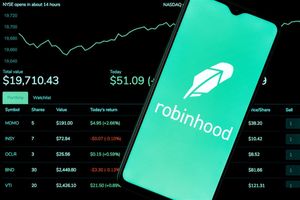
In an era marked by fluctuating interest rates, geopolitical uncertainties, and shifting economic landscapes, a select group of companies known as "Dividend Aristocrats" continues to shine as pillars of stability and consistent shareholder returns. These elite firms, characterized by their unbroken streaks of increasing dividend payouts, offer a compelling narrative for income-focused investors seeking both resilience and growth. Johnson & Johnson (NYSE: JNJ), Procter & Gamble (NYSE: PG), and ExxonMobil (NYSE: XOM) stand out as prime examples, demonstrating how robust business models and disciplined financial management can translate into reliable income streams for decades.
The allure of these dividend stalwarts is particularly pronounced in today's financial markets, where the pursuit of steady income and capital preservation often takes precedence over speculative growth. Their proven ability to navigate through various economic cycles, including recessions and periods of high inflation, underscores their significance as cornerstone investments for a diversified portfolio. As we delve into the fundamentals that define these corporate giants, it becomes clear why their commitment to consistent payouts is not just a historical footnote, but a powerful indicator of future financial health and investor confidence.
Unpacking the Aristocratic Legacy: JNJ, PG, and XOM's Unwavering Payouts
Dividend Aristocrats are defined as companies within the S&P 500 Index that have increased their dividend payouts for at least 25 consecutive years. This stringent criterion reflects exceptional financial strength and an enduring business model. Johnson & Johnson, Procter & Gamble, and ExxonMobil exemplify this elite status, each boasting remarkable records of dividend growth that extend far beyond the minimum threshold. Their commitment to returning value to shareholders highlights disciplined management and robust cash flow generation.
Johnson & Johnson (NYSE: JNJ), a global healthcare behemoth, stands as a Dividend King, having increased its dividend for an astounding 62-63 consecutive years. Its diversified portfolio across pharmaceuticals and medical devices provides stable revenue, even in challenging economic times. For the third quarter of 2025, JNJ's Board of Directors declared a quarterly cash dividend of $1.30 per share, payable on September 9, 2025, to shareholders of record on August 26, 2025. This unwavering commitment in the essential healthcare sector makes JNJ a cornerstone for income investors seeking long-term stability and growth.
Similarly, Procter & Gamble (NYSE: PG), a consumer staples powerhouse, is also a Dividend King, with an unparalleled history of paying dividends for 135 consecutive years and increasing them for an impressive 69 consecutive years. Its vast array of globally recognized brands, from Tide to Pampers, ensures consistent demand and resilient financial performance. P&G recently declared a quarterly dividend of $1.0568 per share, payable on August 15, 2025, to shareholders of record on July 18, 2025. This exceptional track record provides a highly reliable income stream, acting as a defensive play during market volatility.
ExxonMobil (NYSE: XOM), one of the world's largest integrated energy companies, has remarkably maintained its Dividend Aristocrat status despite the cyclical nature of the energy sector. The company has increased its dividends for 43 consecutive years, a testament to its scale, integrated operations, and financial discipline. Its latest quarterly dividend per share was $0.99, paid on September 10, 2025, to shareholders of record on August 15, 2025. XOM's ability to consistently raise dividends even amidst fluctuating commodity prices makes it an attractive option for income investors looking for stable exposure to the energy sector.
The Fortified Foundations: Why These Giants Consistently Win for Investors
The sustained dividend increases from Johnson & Johnson (NYSE: JNJ), Procter & Gamble (NYSE: PG), and ExxonMobil (NYSE: XOM) are not merely acts of generosity but are deeply rooted in their formidable business strengths and strategic advantages. These underlying attributes differentiate them sharply from companies with less reliable payouts, making them compelling choices for income-focused investors.
Johnson & Johnson's strength lies in its highly diversified healthcare portfolio, spanning pharmaceuticals, medical devices, and consumer health. This diversification mitigates risks across product lines and market segments. The company's consistent, substantial investment in research and development fuels a robust pipeline of innovative new products and therapies, ensuring long-term growth and maintaining market leadership. JNJ’s strong financial health, characterized by consistent revenue growth and robust free cash flow, is further bolstered by one of the healthiest balance sheets globally, enabling its continued dividend growth and a rare AAA credit rating.
Procter & Gamble's dominance stems from its unparalleled portfolio of essential consumer brands, such as Tide, Pampers, and Gillette. These brands enjoy strong consumer loyalty and global reach, providing exceptionally stable and predictable revenue streams regardless of economic conditions. P&G's world-class supply chain and extensive retail relationships across over 180 countries offer a significant competitive advantage, allowing for higher profit margins. The company's "fortress-like cash generation" and a conservative dividend payout ratio (around 53.5% in fiscal Q2 2025) provide ample flexibility to continue its long-standing tradition of dividend increases and share repurchases.
ExxonMobil, despite operating in the often-cyclical energy sector, maintains its dividend consistency through its integrated business model across upstream, downstream, and chemicals segments. This integration provides cost advantages, operational efficiencies, and a natural hedge against commodity price fluctuations—for instance, strong refining margins can offset lower crude oil prices. Its vast scale, technological expertise, and focus on high-return assets in regions like the Permian Basin and Guyana ensure steady output and profitability. XOM's disciplined capital allocation and robust free cash flow generation underscore its financial prudence, allowing it to invest in major long-term projects while consistently returning capital to shareholders. These deep-seated strengths distinguish them from companies prone to erratic cash flows and vulnerable to economic shifts, which often lead to uncertain or cut dividends.
Market Stabilizers: Broader Implications of Consistent Dividends
The consistent dividend payouts from Dividend Aristocrats like Johnson & Johnson (NYSE: JNJ), Procter & Gamble (NYSE: PG), and ExxonMobil (NYSE: XOM) play a crucial role in fostering market stability, particularly during periods of economic uncertainty. These companies, by their very nature, act as anchors in an often-volatile sea, influencing broader industry trends and investor behavior.
Their resilience and lower volatility are significant. Historically, Dividend Aristocrats have exhibited lower stock price volatility and often outperform the broader market during downturns. For example, Johnson & Johnson's stock fell by only 21% during the 2008 financial crisis, compared to the S&P 500's 54% plummet. This defensive characteristic makes them attractive safe havens, cushioning portfolios when other sectors face significant headwinds. The reliable income stream they provide also instills investor confidence, offering a tangible return that can offset capital losses and prevent panic-driven selling during turbulent times.
The performance and dividend policies of these stalwarts also have broader industry implications. They set a high benchmark for corporate financial health and responsible capital allocation. Other companies may strive to emulate their dividend track records to attract long-term, stable investors, thereby encouraging more disciplined financial management across industries. The presence of numerous Dividend Aristocrats in defensive sectors like consumer staples and healthcare also highlights the inherent stability and recession-resistant nature of these industries, often directing investor interest towards them during economic uncertainty. This trend influences investment strategies, with many investors and funds actively seeking out these companies or investing in Dividend Aristocrat-tracking ETFs, underscoring the value of income generation and capital preservation over purely growth-oriented approaches in turbulent markets. Furthermore, for companies nearing or holding Aristocrat status, there is often immense pressure on management to maintain the dividend streak, as losing the designation can negatively impact investor perception and valuation, thereby encouraging a sustained focus on profitability and shareholder returns.
What Lies Ahead: Navigating the Future with Dividend Aristocrats
The future outlook for Dividend Aristocrats Johnson & Johnson (NYSE: JNJ), Procter & Gamble (NYSE: PG), and ExxonMobil (NYSE: XOM) appears largely stable, yet each faces a unique set of challenges and opportunities that will shape their performance and dividend policies. Investors should consider these dynamics to make informed decisions.
Johnson & Johnson (NYSE: JNJ) is projected for modest short-term growth, with anticipated stock prices averaging around $179 in 2025. Long-term, analysts are bullish, forecasting prices potentially reaching $227 by 2030, driven by a robust drug pipeline and strong oncology performance. However, ongoing talc-related litigation and patent expirations for blockbuster drugs like Stelara present significant challenges. Opportunities lie in new product launches, strategic acquisitions in MedTech, and its diversified healthcare segments which ensure resilient demand. JNJ's impressive 62-63 consecutive years of dividend increases, supported by a healthy payout ratio, suggest ample room for continued growth.
Procter & Gamble (NYSE: PG) is expected to maintain its stability, with forecasts indicating an average stock price of $158-$165 by the end of 2025. Long-term, P&G is projected for bullish trends, potentially reaching $194.59 by 2028. The primary challenge is intense competition from private labels and evolving consumer preferences. However, P&G's strength in iconic brands, focus on innovation, and strategic divestments enhance cash flows. With 69 consecutive years of dividend increases and plans to repurchase $6-7 billion in shares in fiscal 2025, P&G's commitment to shareholders remains robust.
ExxonMobil (NYSE: XOM) faces near-term variability due to its exposure to crude oil and natural gas price fluctuations, but its long-term outlook is optimistic, with price targets potentially reaching $346.59 by 2030. Challenges include refining and chemical margin pressures, geopolitical risks, and the global energy transition. Opportunities arise from strategic investments in lower-emission solutions, targeted cost savings of $6 billion by 2030, and market expansion in high-demand regions. XOM's 43 consecutive years of dividend increases, backed by strong projected cash flow, underpin its capacity for sustained payouts.
Economic factors, such as interest rate changes and inflation, will continue to influence these companies. Rising rates can increase borrowing costs, while inflation underscores the value of growing dividends. Defensive sectors like healthcare and consumer staples, where JNJ and PG operate, tend to be more resilient during economic downturns, allowing them to maintain dividend growth. Investors should monitor payout ratios, company-specific fundamentals, global economic policies, and valuations to assess the long-term sustainability and attractiveness of these Dividend Aristocrats.
The Lasting Legacy: A Conclusion on Enduring Value
The narrative of Dividend Aristocrats, epitomized by Johnson & Johnson (NYSE: JNJ), Procter & Gamble (NYSE: PG), and ExxonMobil (NYSE: XOM), is one of enduring value, financial discipline, and unwavering commitment to shareholders. These companies are not merely attractive for their dividend yields; they represent a fundamental strength rooted in robust business models, market leadership, and the ability to generate consistent cash flows across various economic climates. Their significance in an investment portfolio extends beyond income generation, offering a crucial blend of stability, inflation protection, and superior risk-adjusted returns that can be invaluable in a volatile market.
The long-term impact of these corporate giants on investment strategies is profound. JNJ's defensive healthcare portfolio, PG's ubiquitous consumer brands, and XOM's integrated energy operations have all demonstrated how essential services and goods can foster consistent profitability and shareholder returns for decades. They serve as benchmarks for corporate health, influencing other companies to prioritize sustainable growth and responsible capital allocation. For income-focused investors, these companies provide a reliable anchor, allowing for compounding growth through dividend reinvestment and offering psychological comfort during market turbulence.
As investors look to the coming months, several key factors warrant close attention. Monitoring the sustainability of dividend payouts through payout ratios and free cash flow generation is paramount. While these companies have impressive track records, investors should remain vigilant to company-specific challenges, such as litigation for JNJ, competitive pressures for PG, and commodity price volatility for XOM. Broader economic trends, including interest rate trajectories and inflation, will continue to shape their operating environments. Ultimately, understanding the intrinsic value, resilient business models, and commitment to shareholder returns that define Dividend Aristocrats will be crucial for those seeking stable, long-term wealth creation in an ever-evolving financial landscape.





